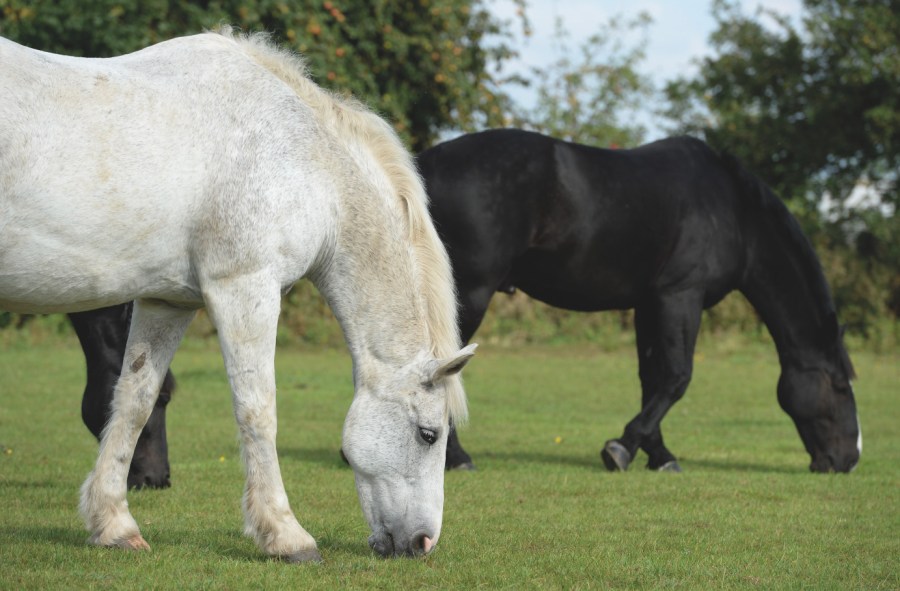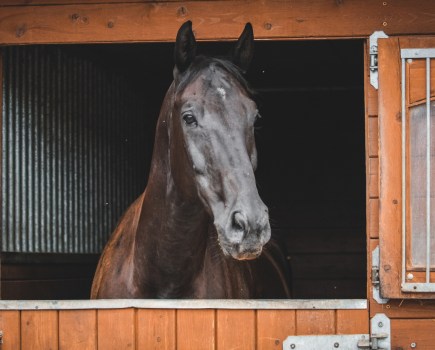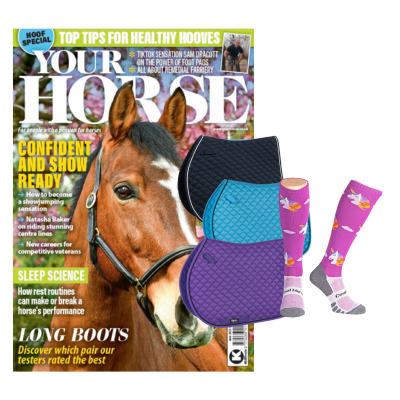As with humans, weight gain cause slowly creep up on our horses without us really noticing, especially when they are likely to be wearing rugs, are stabled for longer periods and are not doing as much exercise. Vet Lucy Grieve shares her advice for owners who are concerned about their horse’s weight heading into spring.
In an ideal world, horses lose weight through the winter when food is scarce and cold temperatures mean they require more energy to keep warm, and then come the spring and influx of grass, they put weight back on.
However, modern management means that it’s harder for horses to follow the natural weight loss/ gain cycle, and many go into spring overweight and at high risk of conditions such as equine metabolic syndrome (EMS) and laminitis.
So, what can owners do to prepare their horses and prevent catastrophe?
“The biggest thing is to try and avoid any weight gain in the winter and if possible, encourage weight loss,” says Lucy. “If that hasn’t been successful, or your horse still needs to lose weight, it’s about being on high alert coming into the warmer months.”
High sugar levels
Spring is the time for frosty nights and sunny days, which can be a laminitis trigger.
“It’s not just because the grass is growing, but also because it’s full of sugar after a hard frost,” Lucy explains. “You can’t tell just by looking at your paddock whether the grass is high in sugar, but one thing you can be sure of is that cold nights and sunny days will increase the risk of laminitis, and if your horse is teetering on the edge with being overweight or having undiagnosed Cushings or EMS, that is going to be a risky period.”
Sadly, it’s not as simple as waiting for the frost to melt as the sugar will already be in the grass and is likely to remain.
“It’s about reducing the rate at which horses can eat that grass, so that could be fencing off a smaller area of the paddock or strip grazing, and using a muzzle which create a tickle-feeding effect,” advises Lucy. “People often shy away from grazing muzzles, but they can be life-savers. It’s crucial that horses are trained to wear a muzzle so they can eat and drink comfortably. There is a website (newc.co.uk) which has a grazing muzzle guide and explains how to fit them, discusses the different types, how to ensure they don’t rub and how to make sure the horse can eat and drink through them. Usually, after an hour, the horse has worked it out.”
Health MOT
Spring is also a good time to check everything is A-OK with your horse in terms of his general health.
“It’s worth giving your horse an MOT at the start of the season to check their overall health status and pick up any low-grade lameness, especially before you up the workload,” says Lucy. “Routine checks should include assessing body condition score, dental examination and rasping, a trot up, checking the neck, back and legs, and getting your saddle fit checked. It’s also a good time to ensure that their flu vaccination is up-to-date ready to go out competing. A lot of practises offer packages where you get your horse checked over, vaccinated, teeth rasped and worm control plan, all for a discounted fee.”
Lucy advises owners to have their saddles checked at least twice a year, including in spring, particularly if their horse has changed shape over the winter.
“Saddlers can usually make minor tweaks, rather than you needing a brand-new saddle every six months, and this can make all the difference to a horse’s comfort and ability to move properly, which will prevent lameness and back pain going forward,” she says.
For horses aged 15 and over, Lucy suggests discussing Cushing’s disease with your vet.
“Even if they are not displaying all the obvious signs, this is the time of year that undiagnosed Cushing’s horses can get laminitis,” she says. “It’s not that their Cushing’s has suddenly appeared, it’s that the sugar in the grass has triggered them to get laminitis. Talk to your vet about the combination of risk factors (breed and age), as catching it early is key.”
Should you turn out a laminitic horse?
It can be difficult knowing what’s best if your horse is at risk of laminitis and his paddocks are full of lush grass – should you stable or turn out?
“I would always prefer to see horses moving, so avoid box rest if possible,” says Lucy. “Box rest is the equivalent of a horse being stuck on a sofa like a couch potato. Having them out in the elements is more natural in terms of their metabolism. The best thing is to have an all-weather turnout area such as a wood chip paddock for horses that struggle with weight, because they can still move and play with a friend. You can limit their forage by hanging up small-holed haynets. Alternatively, a grazing muzzle will limit the amount of grass they can eat.”
How much weight gain is safe?
“If you’re looking at the Body Condition Scoring range, your horse wants to be 4 or 5 out of 9 ideally, so allowing it to be one score either way – that is, one less in the winter and one more in the spring/ summer – is an acceptable, natural, weight fluctuation through the year,” explains Lucy.
“If you are weighing your horses using a weigh bridge, it’s worth noting that weight gain can be caused by an increase in muscle mass if you are increasing the work your horse is doing, so don’t panic, but also don’t use this as an excuse for weight gain if there hasn’t been any genuine muscle mass increase – any weight gain will likely be fat. It’s more important to know the difference between fat and muscle and that is where vets and physios will help. If you’re unsure, ask a professional for advice.”
Check out our subscription offer









